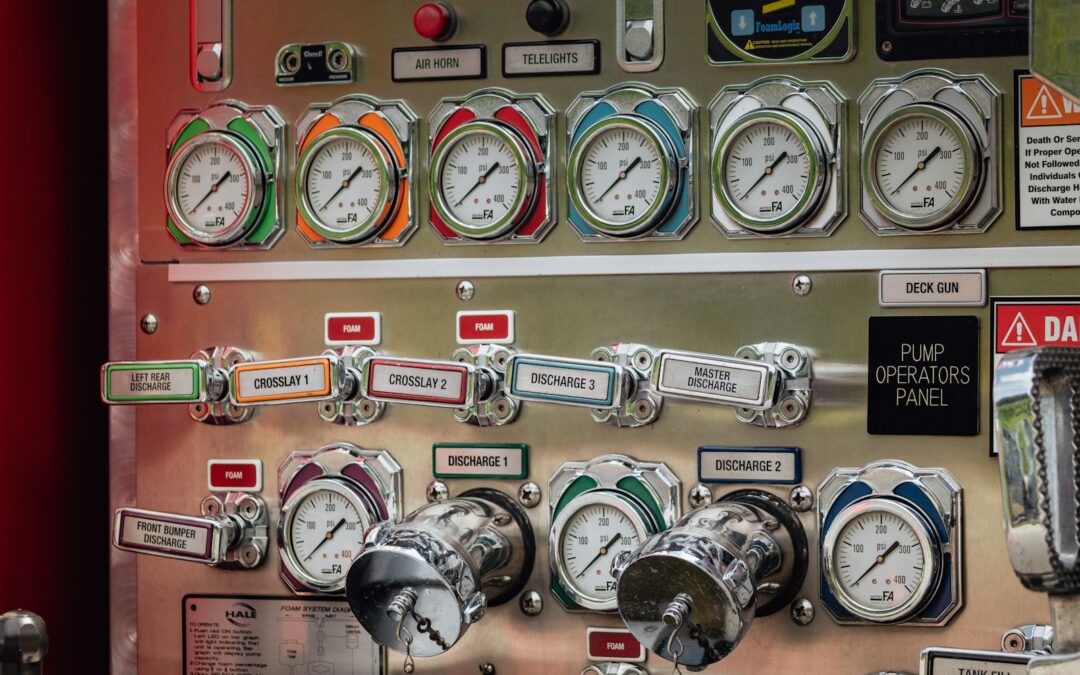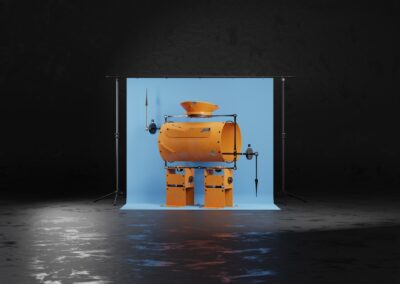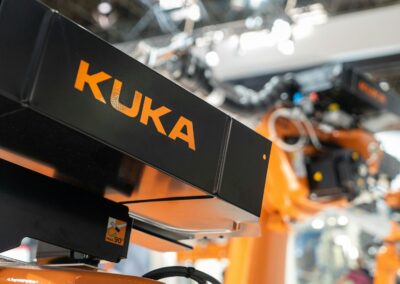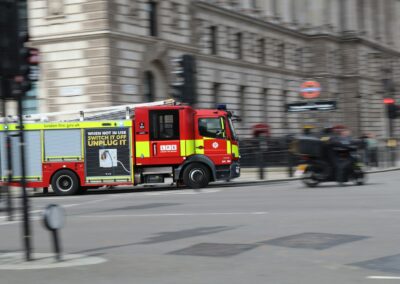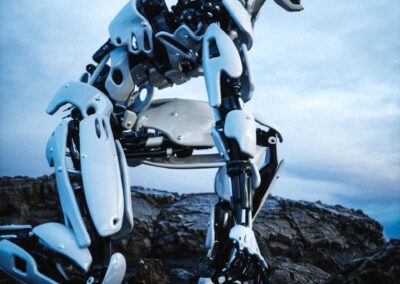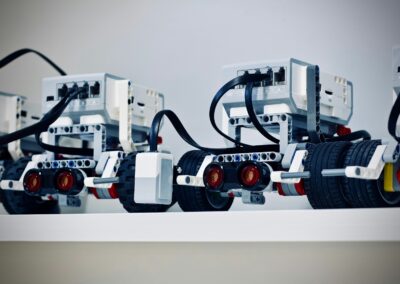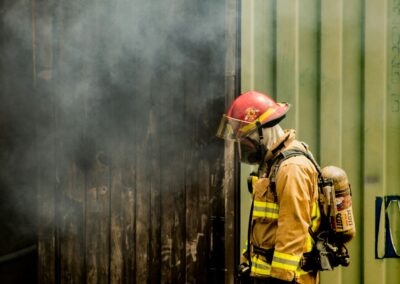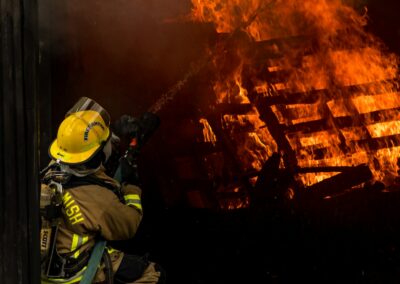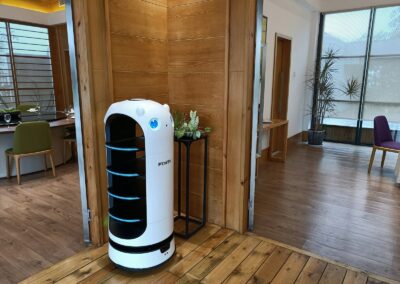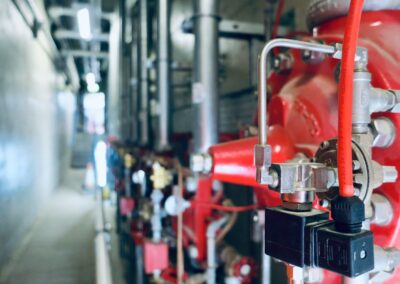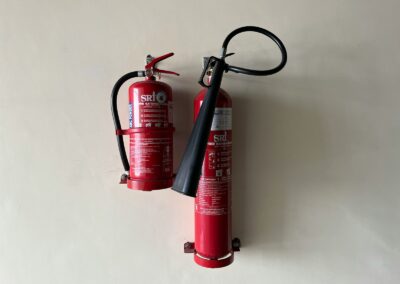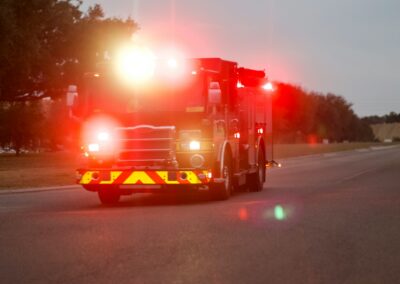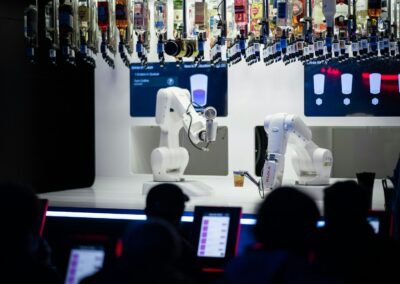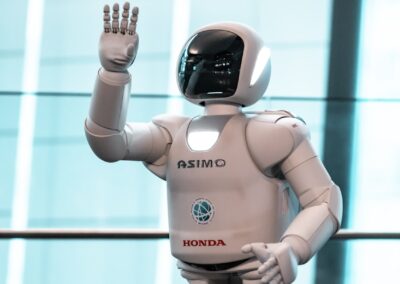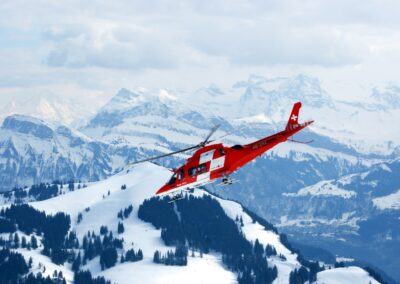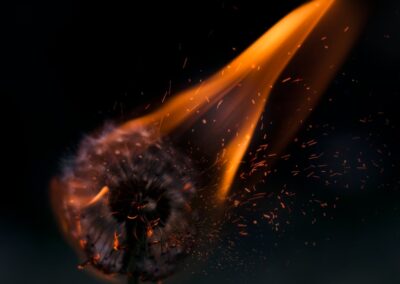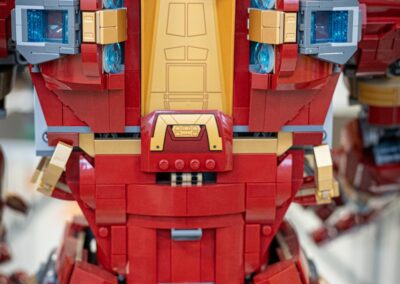Transforming Firefighting with Advanced Robotics
Introduction to Firefighting Robots
The firefighting robots in modern fire suppression represent a revolutionary advancement in the field of fire safety. These robots are designed to operate in various challenging environments, including industrial sites, urban areas, and forested regions, providing versatile and efficient fire suppression capabilities. In regions like Saudi Arabia and the UAE, where technological innovation is a key priority, the deployment of firefighting robots is transforming how fires are managed and controlled.
Firefighting robots are equipped with advanced sensors, cameras, and water cannons, enabling them to detect and extinguish fires with high precision. These robots can navigate through hazardous conditions that may be too dangerous for human firefighters, such as intense heat, toxic smoke, and unstable structures. This capability not only enhances the safety of firefighting operations but also increases the effectiveness of fire suppression efforts.
In urban centers like Riyadh and Dubai, where the density of buildings and infrastructure poses significant fire risks, the adoption of firefighting robots is particularly beneficial. These robots can quickly respond to fire incidents, minimizing damage and protecting lives. Moreover, their ability to operate autonomously or under remote control ensures that firefighting efforts can continue even in the most perilous conditions.
Firefighting Robots in Industrial Sites
The deployment of firefighting robots in modern fire suppression is especially crucial in industrial sites, where the risk of fire is high due to the presence of flammable materials and complex machinery. In Saudi Arabia and the UAE, where industries such as oil and gas, manufacturing, and logistics are prominent, ensuring robust fire safety measures is imperative.
Firefighting robots in industrial settings are designed to navigate through tight spaces and operate in environments with limited visibility. They are equipped with thermal imaging cameras and gas sensors, allowing them to detect fires and hazardous substances quickly. This early detection capability is vital in preventing small fires from escalating into major incidents.
Additionally, firefighting robots can be integrated into the broader safety infrastructure of industrial sites. They can be programmed to follow pre-determined routes, conduct regular inspections, and respond automatically to fire alarms. This integration enhances the overall safety and resilience of industrial operations, ensuring that fire risks are effectively managed.
Urban Applications of Firefighting Robots
In densely populated urban areas such as Riyadh and Dubai, the use of firefighting robots in modern fire suppression offers numerous advantages. Urban environments present unique challenges for fire suppression, including high-rise buildings, congested streets, and limited access points. Firefighting robots are designed to overcome these challenges, providing rapid and effective fire response.
These robots can be deployed in high-rise buildings to extinguish fires on upper floors, where access for human firefighters may be difficult. They are equipped with powerful water cannons and foam dispensers, capable of suppressing fires from a distance. This capability is crucial in urban settings, where quick intervention is necessary to prevent the spread of fire to adjacent buildings.
Moreover, firefighting robots can navigate through narrow streets and alleys, reaching fire sites that may be inaccessible to traditional fire trucks. This flexibility enhances the responsiveness of fire services, ensuring that fires are contained and extinguished promptly. The use of firefighting robots in urban areas not only protects lives and property but also contributes to the overall resilience of cities.
Firefighting Robots in Forested Regions
Forested regions, which are prone to wildfires, also benefit significantly from the deployment of firefighting robots in modern fire suppression. Wildfires pose a serious threat to both the environment and human settlements, making effective fire suppression strategies essential. In countries like Saudi Arabia and the UAE, where forested areas and green spaces are being developed, the use of advanced firefighting technologies is becoming increasingly important.
Firefighting robots in forested regions are designed to operate in rugged terrain and extreme conditions. They are equipped with all-terrain wheels or tracks, allowing them to navigate through dense vegetation and uneven ground. These robots can carry large quantities of water and fire retardants, enabling them to combat wildfires effectively.
Furthermore, firefighting robots can be deployed in conjunction with aerial drones, which provide real-time surveillance and mapping of fire-affected areas. This combined approach enhances situational awareness, allowing fire services to coordinate their efforts and deploy resources more efficiently. The use of firefighting robots in forested regions not only mitigates the impact of wildfires but also supports conservation efforts by protecting natural habitats.
Leadership and Management in Firefighting Robotics
The successful implementation of firefighting robots in modern fire suppression requires strong leadership and effective project management. Business executives, mid-level managers, and entrepreneurs in Saudi Arabia, the UAE, and beyond must develop a comprehensive understanding of the technology and its applications. This involves fostering a culture of innovation, encouraging continuous learning, and staying abreast of the latest advancements in robotics and fire safety.
Effective leadership in this context also requires the ability to manage complex projects that involve multiple stakeholders, including technology providers, fire services, and regulatory authorities. Project management skills, such as strategic planning, risk assessment, and resource allocation, are crucial in ensuring the successful deployment and operation of firefighting robots.
Leaders must also prioritize training and capacity-building for their teams. This includes ensuring that firefighters and emergency responders are well-versed in operating and maintaining firefighting robots. By investing in training and development, organizations can enhance their operational readiness and ensure that they are well-prepared to respond to fire incidents.
Conclusion: A Technological Leap Towards Safer Communities
The deployment of firefighting robots in modern fire suppression marks a significant technological leap towards creating safer communities. These advanced robots provide versatile and efficient fire suppression capabilities, enhancing the safety and resilience of industrial sites, urban areas, and forested regions. In regions like Saudi Arabia and the UAE, where technological innovation is a key priority, the adoption of firefighting robots is transforming how fires are managed and controlled.
In conclusion, business executives, mid-level managers, and entrepreneurs must embrace these advancements and develop the necessary leadership and project management skills to successfully implement firefighting robots. By fostering a culture of innovation and collaboration, it is possible to build more effective and trustworthy fire safety practices. As we continue to witness rapid technological advancements, the role of firefighting robots in enhancing fire suppression will undoubtedly become increasingly significant, paving the way for safer and more resilient communities.
—
#FirefightingRobots #FireSuppression #IndustrialSites #UrbanAreas #ForestedRegions #ModernTechnology #ArtificialIntelligence #SaudiArabia #UAE #Riyadh #Dubai #BusinessSuccess #Leadership #ProjectManagement

